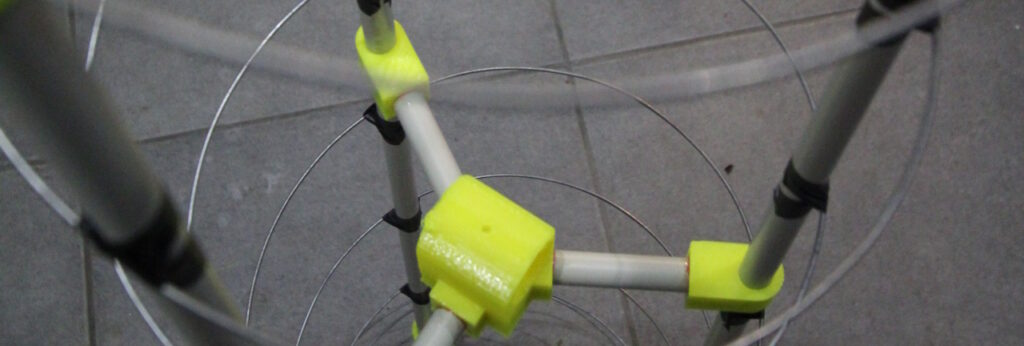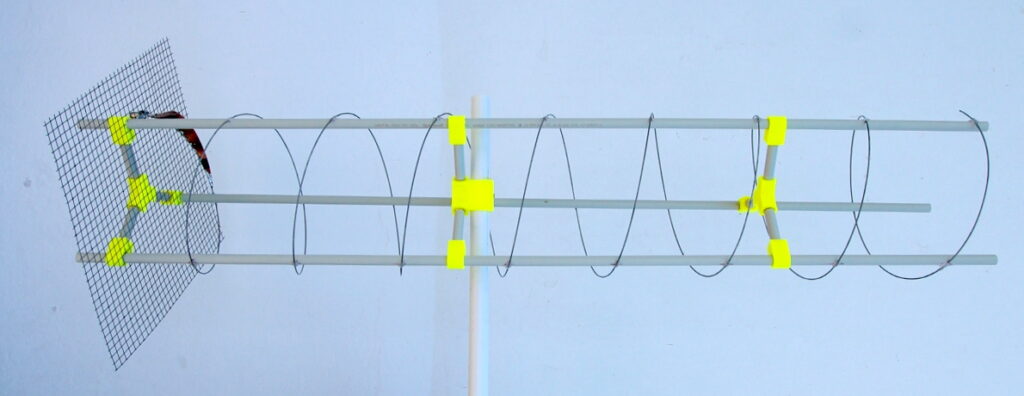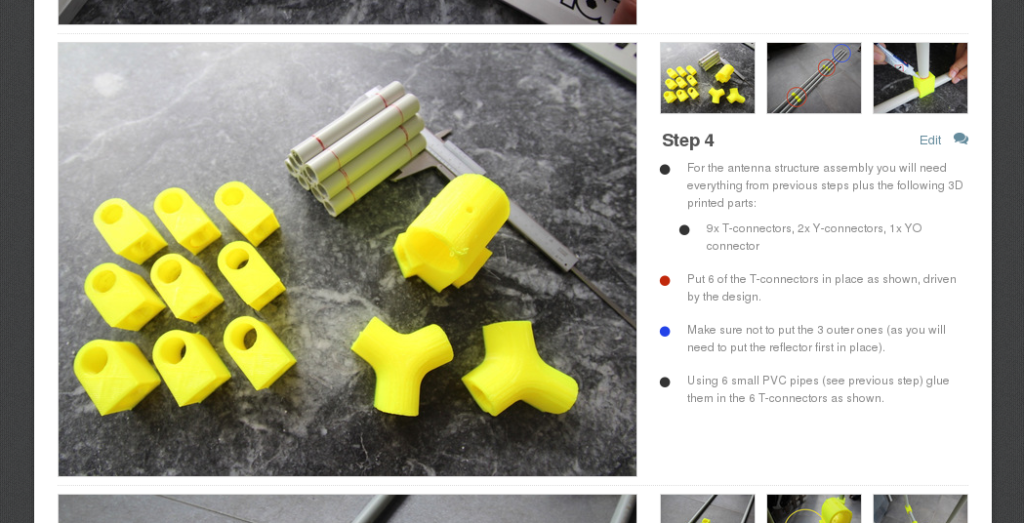An important part of the instrumentation of our ground station is the Antennas. Early on the SatNOGS team designed and constructed 2 Yagis for UHF and VHF bands. The UHF Yagi design was essentially a cross Yagi design trying to address the circular polarization issue. Based on the experimental operation of the ground station we were sure we can do something better.
Satellites are tumbling and turning, thus if the transmission of the transponder is done in a single dimension polarization you better match this polarity to get the optimum gain. (if not you will loose 30dB) (check here for details). We decided that a Helical antenna would give SatNOGS a better chance for an optimal reception, so we needed to design, document and build one.
There are a couple of theoretical models for Axial-mode Helical Antennas. Most notable are the Emerson one and the Kraus. We decided to go for Emerson, given our wavelengths, construction constrains and overall size. As we were going for UHF band 437Mhz seemed like a popular frequency for satellite communications and we centered around it. As for the circular polarization we designed a Left-Hand one (as we already had a Right-hand cross-Yagi design).
Dimitris worked on a modular and extensible design that can be used on other bands too. 3D printed parts and off the self items is the classical recipe that we followed. The result is a sturdy and easy to construct antenna. Initial tests are showing improvements compared to our cross-yagi UHF which is a win!
The design can be found here, bill of materials here and a detailed documentation on how to build here.
Optimization of the antenna is crucial. We invested considerable amount of time towards that and there is always room for improvement in matching, constructions and details [1]. More NEC calculations will follow and we expect more fixes as we go.
[1] http://users.ece.gatech.edu/~az30/Downloads/HelixAPMagazineSubmission.pdf







